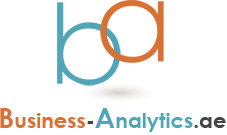
Big Data 2.0
 The first phase of big data (Big Data 1.0) was all about “getting it.” The more data we had, the better the targeting, measurement and insights capabilities we could attain. The big data ecosystem has now reached a tipping point where the basic infrastructural capabilities for supporting big data
The first phase of big data (Big Data 1.0) was all about “getting it.” The more data we had, the better the targeting, measurement and insights capabilities we could attain. The big data ecosystem has now reached a tipping point where the basic infrastructural capabilities for supporting big data
challenges and opportunities are easily available. Now we are entering what we would call the next generation of big data — big data 2.0 — where the focus is on three key areas:
1. Speed: Data is growing at an exponential rate, and the ability to analyze it faster is more important than ever. Even the analytics providers are realizing the importance of speed and have built products that can analyze terabytes of data within seconds.
2. Data Quality: Data quality becomes more important with data growing at an exponential rate. The speed at which decisions are made has already reached a point where the human brain can’t keep up. This means that based on defined rules, data is cleansed and processed and decisions are made, all without any human intervention.
3. Applications: Big data has created so much excitement that everyone wants to use it, but the technical challenges prevents greater adoption. Applications help overcome this challenge by making it easy for everyone to benefit from big data.
Big data 2.0 is delivering advanced analytics and visualization tools that allow users (who aren't data scientists) to derive timely, meaningful insight from their data assets is the key to helping organization "see" the value from big data. These tools help to fill in the "last mile" of big data by presenting the complex relationships found within unstructured, structured, and even multi-structured big data in ways that make it easy to turn insights into action. The tools query and model the underlying data sources (in many cases, via the power of in-memory computing) before presenting a visual analysis of the data.
Such systems are particularly suitable for an exploratory style of analysis demanded by big data by virtue of their ability to recognize patterns and communicate data in a way that business users find more tangible and meaningful than picking through reams of tabular data.
The message is clear. We need to position ourselves carefully to avoid the fallout from the impending big data "hype hangover." Meanwhile, we need to look closely at how best to achieve real payback for our big data investments. The best way to do just that is to operationalize analytics by focusing on high-value use cases -- and use intuitive and engaging data visualization tools. That's a combination that provides a sensible way forward for next-generation big data 2.0, producing new ways to drive brand loyalty, improve profitability, and give customers the targeted, useful service they expect.
Source: http://www.researchgate.net




